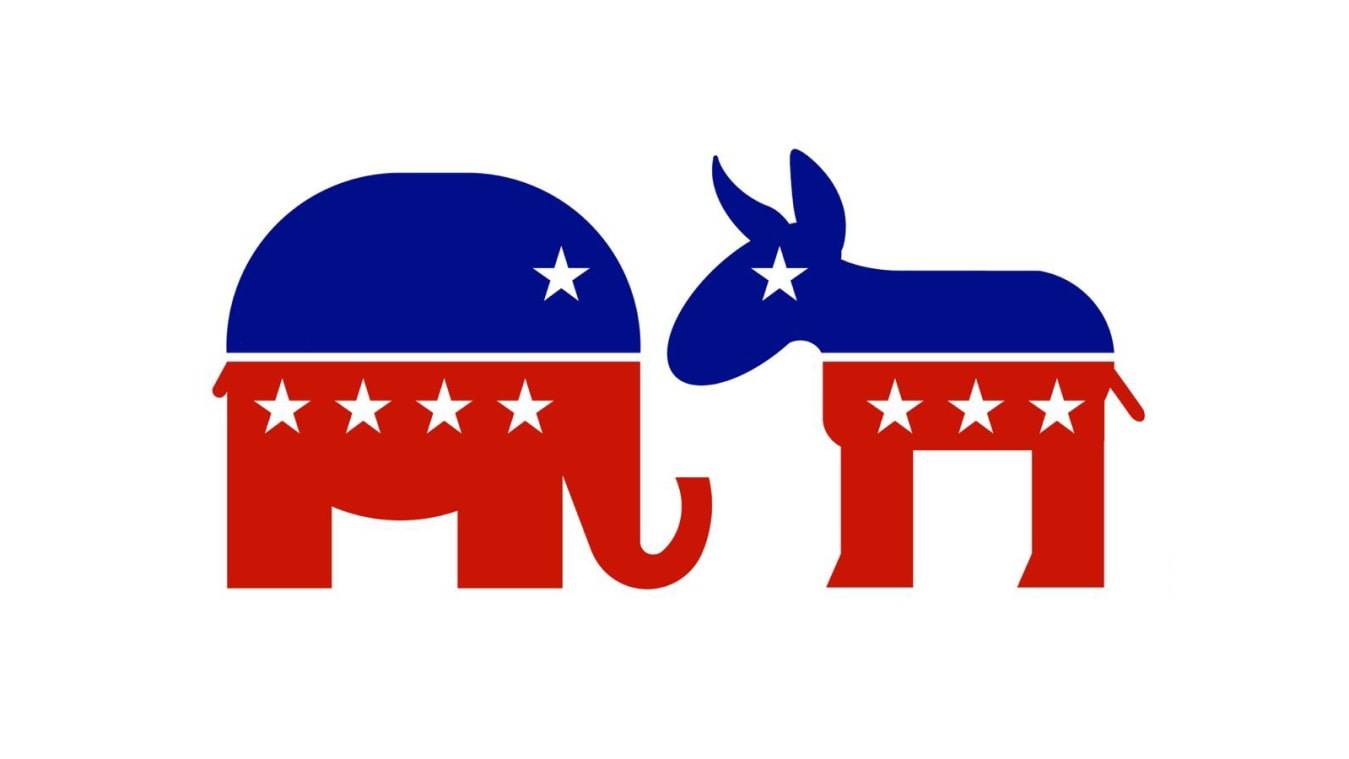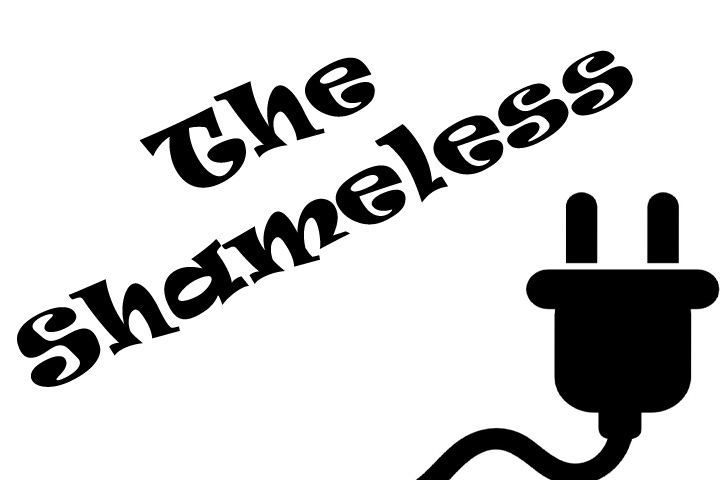The History of the Republican and Democratic Parties
Our Two-Party system started in the early 19th century
Graphic Credit: cnn.com
Issue #178 American History November 15, 2022
No intrusive ads or annoying popups ever! Instead, please see the important information at the bottom of this post. That’s how we grow and sustain this publication. AND, please keep those “Likes” and comments coming! Thanks!
Save 48% with an annual subscription! Limited Time Only!
How the political parties began
The modern political system of the United States includes two major political parties and several much smaller third parties. The Democratic and Republican parties that we know today were much different as they evolved in the 19th century. Although the policies and platforms of the two parties have almost entirely switched since the 19th century, the current Democratic Party started in 1828, while the current Republican Party was founded in 1854.
It all started with strong disagreements among the Founders. Right after the country started operating under the Constitution in 1789, George Washington, Alexander Hamilton, and John Adams formed the Federalists, advocating for a strong central government and a central banking system. Thomas Jefferson and James Madison (the “Anti-Federalists”) wanted a smaller and more decentralized government and formed the Democratic-Republicans.
(Remember, technically, the United States is not a true democracy, but instead a “republic.” A republic is a state or country without a monarchy where the power rests with the people or their representatives.)
At the very beginning of the 19th century, the Democratic-Republicans dominated while the Federalists eventually dissolved. For the presidential election of 1824, there were four candidates of the party. John Adams won the presidency although Andrew Jackson won the popular vote. Sound familiar?
In this election, no candidate won a majority of the electoral college and the House of Representatives supported and voted for John Adams over then-Senator Andrew Jackson. This election was so contentious that it split the Democratic-Republican party in two, resulting in the Democratic Party and the Whig Party.
Andrew Jackson, who was against the Central Bank of the United States but for states’ rights and minimal government regulation, became the head of the Democratic Party after he won the presidential election of 1828. The Whig Party strongly opposed the Democrats and supported the national bank.
How did the donkey and the elephant become the symbols of the political parties?
Andrew Jackson’s opponents called him a “jackass” as an insult meaning he was supposed to be unintelligent or foolish. Instead of being insulted, Jackson embraced the nickname, leading to the donkey symbolizing the Democrats.
Jackson is considered to be the “father” of the Democratic Party, and for a couple of centuries, was held up as an idol of the party, especially since he was a general who won several important battles during the War of 1812. Finally, it was acknowledged that Jackson really was a “jackass” as well as an autocrat and a slave-owner, especially for his role in breaking the 1835 treaty with the Cherokees and beginning the Trail of Tears which relocated over 15,000 Native Americans, thousands of whom died during the journey.
Recently, Andrew Jackson’s “star power” has faded. The annual fund-raising “Jefferson-Jackson Dinner” of the Democratic Party has been renamed the “Legacy Dinner” and Andrew Jackson’s face on the $20 bill will be replaced with that of Black abolitionist and former slave Harriet Tubman by 2030.
The famous 19th-century political cartoonist Thomas Nast first drew the elephant as a representation of his party, the Republicans, as an insult because he thought they were “lumbering” away from their original ideals.
Later, the Republican Party adopted the elephant as its logo because they believed that the elephant stood for dignity and strength.
How slavery and the lead-up to the Civil War changed the political parties
In the late 1850s, slavery was one of the top issues in the country. Southern Democrats wanted slavery to be expanded into the western territories, while Northern Democrats believed that the issue should be settled on the local level through a popular referendum. Because of the split in the Democratic Party, Abraham Lincoln won the 1860 presidential election as a Republican, which had recently been formed by a group of Whigs, Democrats, and others to form a party based on anti-slavery.
At this time, the South was primarily Democratic and advocated for conservative, agrarian-focused, and anti-big-business. In the North, however, the Republicans were dominant and fought for civil rights and voting rights for African American men. This is one reason why most African-Americans identified as Republicans for the next several decades.
The Changes to the Political Parties by the mid-1950s
After the Civil War, the Republicans became more oriented towards economic growth, larger industries, and big business in the Northern states. Many of them became very wealthy in the early 20th century and the Republican Party came to be known as the party for the wealthy classes, until the stock market crash of 1929.
Because many Americans blamed the Republican president Herbert Hoover for the financial crisis, they elected a Democrat, Franklin D. Roosevelt (FDR) to be president. Roosevelt was re-elected a record three times, continuing as president until his death in 1945. His vice-president, Harry Truman, was elected in 1948, so the Democrats led the country for twenty years until Dwight D. Eisenhower was elected in 1952.
The 22nd Amendment, ratified in 1951, limited the terms of a president to two elected terms, or one elected term if the person served as president for more than two years previous (in the case of a presidential resignation or death).
FDR introduced his New Deal to bring the country back on track during the Great Depression. The New Deal launched several progressive social programs funded by the government, including Social Security, the minimum wage, and improved infrastructure. Harry Truman continued and expanded these programs, guiding the Democratic Party toward the protection of civil rights and desegregation. This is when those liberal policies started to shape the modern Democratic Party.
The Southern Democrats, who were much more conservative, were strongly against Roosevelt’s liberal initiatives and joined the Republican Party. The racist Southern Democrats who remained came to be known as the “Dixiecrats.”
When Democratic President Lyndon B. Johnson signed the Civil Rights and Voting Rights Acts, he stated that he knew that would mean that many southern Democrats would switch to the Republican party.
When Ronald Reagan was elected president in 1980, he further steered the Republican party towards cutting taxes, shrinking the size of the federal government, preserving “family values,” increasing military funding, dismantling social programs, and encouraging the racism that started with Richard Nixon’s “Southern Strategy.”
In the 2016 presidential election, Donald J. Trump lost the popular vote but won the electoral college. He ushered in huge tax cuts for the wealthy, isolationist “America First” policies, anti-Muslim and anti-immigrant policies, authoritarian tendencies, and a strong anti-democracy theme that led his supporters to storm the U.S. Capitol on January 6, 2021, with a violent and deadly insurrection and attempted coup in order to overturn the results of the 2020 election where he lost the popular vote and the Electoral college to current Democratic president Joseph R. Biden, Jr.
In the recent midterm elections, most of the “election deniers” who supported Donald Trump lost their elections, and the Democrats retained their majority in the Senate. At the time of this writing, if the Republicans regain control of the House of Representatives, it will be by a very slim margin of only about 2-4 seats of the 218 majority of seats they need.
This is the first time in about sixty years that the party in power did not lose seats in the Senate while also maintaining or even adding governors. Losses of seats in the House will be very minimal, and at least for now, our democratic system is saved, although still fragile as always.
After the first election since the 2021 insurrection, most of the country breathed a collective sigh of relief because “democracy was saved.”
Join us in the “We Are Speaking” Chat Room! (iOS app only; coming to the Android app soon.)
Download the app by clicking this link or the button below. Chat is only on iOS for now, but the chat feature is coming to the Android app soon. In both apps, you can always read, listen to, and view all of your favorite Substack writers in one place on your phone or tablet.
Open the app and tap the Chat icon. It looks like two bubbles in the bottom bar, and you’ll see a row for my chat inside.
That’s it! Jump into my thread to say hi.
Important Follow-Up Information
What are your thoughts and experiences about Veterans Day? Let us know in the comments.
Help us to grow “We Are Speaking!”
Subscribe or adjust your subscription to receive the “Find Out In Fifteen” Branding and Marketing Podcast for the Global Creative Community
Please support us: subscribe for free or upgrade your current subscription to a paid level for only 31¢ per issue or less. We publish 32 issues per month.
You can also subscribe or adjust your subscription to only receive notifications of the W.A.S. Weekly Summary Newsletter (instead of daily emails):
Please check out the products and services of the TeamOwens313 Global Creative Community Branding and Marketing Academy (GCC BMA) for independent writers and creative professionals. We offer three different options: Silver Level: online training and networking, Gold Level: a creative networking community with monthly training and coaching, and Platinum Level: a 6-week coaching session or the quarterly 10-week mastermind cohort (the next mastermind starts in January 2023).
Visit our website for complete information:






